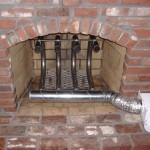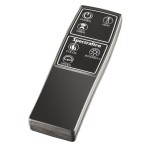Replacing a Wood Stove with a Gas Fireplace: A Comprehensive Guide
Many homeowners consider replacing their existing wood stoves with gas fireplaces for several reasons, including convenience, efficiency, and environmental concerns. While wood stoves offer a traditional aesthetic and provide a significant heat source, gas fireplaces present a modern alternative with reduced maintenance requirements and enhanced control over heating output. This article provides an in-depth exploration of the factors to consider when transitioning from a wood stove to a gas fireplace.
The decision to switch from a wood stove to a gas fireplace involves evaluating the existing wood stove setup, understanding the different types of gas fireplaces available, and considering the installation process and associated costs. Furthermore, homeowners must weigh the advantages and disadvantages of both heating systems to determine the best fit for their individual needs and circumstances.
Key Point 1: Assessing Your Existing Wood Stove and Home
Before embarking on a replacement project, a thorough assessment of the existing wood stove and the surrounding environment is crucial. This assessment should encompass several factors. Firstly, the structural integrity of the existing chimney is important. A wood stove typically requires a robust chimney to vent exhaust gases safely. Gas fireplaces, depending on the type, may require a different venting system, potentially necessitating modifications to the existing chimney or the installation of a new vent.
Secondly, the location of the wood stove within the home plays a significant role. Consider the proximity of gas lines. If a natural gas line is not readily accessible, the cost of extending the gas line to the fireplace location can add substantially to the overall project expense. Alternatively, propane-fueled gas fireplaces are an option, but require a propane tank and regular refills.
Thirdly, evaluate the size and layout of the room where the wood stove is located. This will help determine the appropriate size and heating capacity of the replacement gas fireplace. A fireplace that is too large for the space can overheat the room, while one that is too small may not provide adequate heating.
Finally, consider any local building codes and regulations related to fireplace installations. These codes often dictate specific requirements for ventilation, clearances, and safety features. Consulting with a qualified contractor or building inspector can ensure that the replacement project complies with all applicable regulations. Permits are typically required for both the removal of the wood stove and the installation of the gas fireplace.
Key Point 2: Understanding the Options for Gas Fireplaces
Gas fireplaces come in various types, each with distinct features and installation requirements. Direct-vent gas fireplaces are a popular choice because they draw combustion air from outside the home and vent exhaust gases directly outside. This sealed combustion system minimizes the risk of indoor air pollution and enhances safety. Direct-vent fireplaces can be installed on an exterior wall, simplifying the venting process.
Vent-free gas fireplaces, also known as ventless fireplaces, do not require a chimney or vent. They burn gas very efficiently and release minimal emissions into the room. However, vent-free fireplaces are subject to stricter regulations in some areas due to concerns about indoor air quality and carbon monoxide buildup. They often require a carbon monoxide detector as a safety precaution.
B-vent gas fireplaces utilize existing chimneys for venting. They draw combustion air from inside the room and vent exhaust gases up the chimney. B-vent fireplaces are generally less efficient than direct-vent fireplaces and may require upgrades to the chimney liner to ensure safe and proper venting.
Gas fireplace inserts are designed to be installed directly into an existing fireplace opening. They offer a convenient way to convert a traditional wood-burning fireplace to a gas-fueled system. Inserts are available in direct-vent, vent-free, and B-vent configurations.
Beyond the venting type, gas fireplaces also differ in terms of their aesthetic design, fuel type (natural gas or propane), and heating capacity. Consider the desired style and the heating needs of the space when selecting a gas fireplace.
Key Point 3: Installation Process, Costs, and Considerations
The installation of a gas fireplace involves several steps, beginning with the removal of the existing wood stove. This should be done carefully, ensuring that the stove is disconnected from the chimney and any fuel sources. The chimney should be inspected and cleaned before installing a gas fireplace, particularly if it will be used for venting.
The installation of the gas fireplace itself involves connecting the gas line, venting system, and electrical components. A qualified gas technician should perform the gas line connection to ensure safety and prevent leaks. The venting system must be installed according to the manufacturer's instructions and local building codes.
The cost of replacing a wood stove with a gas fireplace can vary significantly depending on several factors. The type of gas fireplace, the complexity of the installation, and the need for gas line extensions can all influence the total cost. The cost includes the price of the gas fireplace unit, venting materials, permits, labor costs for installation, and any necessary modifications to the chimney or gas line.
Before committing to the project, obtain quotes from multiple qualified contractors to ensure a fair price. It's important to verify the contractor's licenses, insurance, and experience with gas fireplace installations. Ask for references and review online testimonials to assess the contractor's reputation.
Ongoing maintenance is a crucial consideration. Gas fireplaces require regular inspections and cleaning to ensure optimal performance and safety. This includes checking the burner, pilot light, and venting system. A professional inspection is recommended annually to identify potential issues and prevent malfunctions. Regular maintenance helps to extend the lifespan of the gas fireplace and maintain its efficiency.
Consider the long-term operating costs of a gas fireplace compared to a wood stove. While wood may seem like a cheaper fuel source initially, the costs associated with purchasing, storing, and handling firewood, as well as chimney cleaning, can add up over time. Gas prices fluctuate, but a gas fireplace generally offers more predictable and manageable fuel costs.
Environmental impact is another key consideration. Wood stoves can contribute to air pollution, particularly if they are older models that are not EPA-certified. Gas fireplaces, especially those with sealed combustion systems, produce significantly fewer emissions and are considered a more environmentally friendly heating option.
Finally, consider the aesthetic appeal of the gas fireplace. Gas fireplaces offer a wide range of styles, from traditional to contemporary, allowing homeowners to customize the look of their fireplace to complement their home décor. Many gas fireplaces feature realistic-looking flames and ember beds, creating a cozy and inviting atmosphere.
Making an informed decision about replacing a wood stove with a gas fireplace requires careful consideration of all these factors. By thoroughly assessing the existing setup, understanding the available options, and considering the installation process and costs, homeowners can determine whether a gas fireplace is the right choice for their needs.

Replacing A Wood Burning Stove With Gas

Do You Want To Replace Your Gas Fire With A Woodburner

Replacing A Gas Fire With Wood Burner

Do You Want To Replace Your Gas Fire With A Woodburner

Is It Time To Replace Your Old Gas Fire For A More Efficient Wood Burning Stove Alfred Poppins

Converting A Fireplace To Wood Burning Stove Chesneys

Replace Gas Fire With Woodburner In North Petherton Cosy Stoves

Converting A Fireplace To Wood Burning Stove Chesneys

Can I Swap A Gas Fire For Woodburner

Do You Want To Replace Your Gas Fire With A Woodburner
Related Posts








